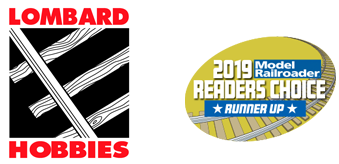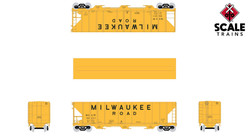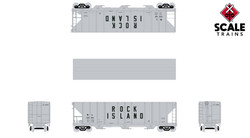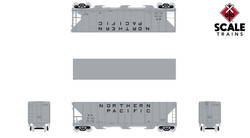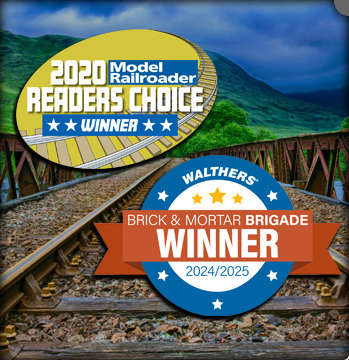ExactRail N
ExactRail N 53016-3 Pullman-Standard 4427 Covered Hopper Milwaukee Road '1965 As Delivered' MILW #98492
- In Stock:
- 2
- Scale:
- N
- SKU:
- EN53016-3
Description
Please note picture is representative of the item but may not be same road number. Always refer to product description for actual product details.
ExactRail N 53016-3 Pullman-Standard 4427 Covered Hopper Milwaukee Road '1965 As Delivered' MILW #98492
The Milwaukee Road initially received their first deliveries of PS-2CD 4427 Covered Hoppers in 1964. These were delivered in gray paint with the large billboard lettering. For the 1965 delivered cars, which we are excited to now offer, were delivered in the bold 'federal yellow' paint. This classic paint scheme of the 1960's could be seen on these cars well into the early 2000's under 2nd and 3rd hand owner reporting marks.
Product Details
- Designed, Engineered and Tooled in the United States!
- Factory installed couplers
- 100-Ton ASF 'Ride Control' Trucks
- CNC- machined metal wheel sets
- Razor sharp painting and printing
- Photo-etched, stainless steel roof walk
Prototype History:
The Pullman-Standard PS-2CD 4427 cubic foot covered hopper, introduced in 1963 offered versatility for various commodities, such as grain products, chemicals, and minerals. Manufactured at their Butler, Pennsylvania factory, the design underwent refinements during its nearly nine-year production period.
Early production featured 'Low-Hip' construction, featuring taller side sheets between the bolsters, while later cars featured 'High-Hip' construction, with shorter side sheets that exposed more of the car bays between the bolsters. Changes were also made to the end 'cages,' including the lowering of the hand-brake, revisions to the end grab iron and support arrangements.
Similar to other covered hoppers, customers had the option to choose different roof hatch configurations, including full-length trough round hatches. The full-length versions were commonly used for grain transport, facilitating easy loading from grain elevators. On the other hand, round hatches were preferred for commodities that required enhanced protection from the elements due to their superior sealing capability.
Customers could also specify different types and brands of outlets to suit various commodities. Gravity outlets were suited for grain products, while gravity-pneumatic outlets offered even more flexibility, being able to switch between straight gravity discharge, or pneumatic discharge via vacuum hoses, which was ideal for powdery commodities.
The choice of running board and end coupler platforms varied according to customer preferences. These cars could be equipped with Apex slotted-hole, Morton round-hole, or U.S. Gypsum diamond-hole types, offering different platform options.
Production ended in 1971 with thousands of cars operating in revenue freight service across North America until the late 2000s. Cars built prior to July 1, 1974 fall under AAR Rule 90 status, allowing a car life of 40 years in interchange service. Since freight cars built prior to 1974 are no longer eligible for 'Free Interchange' service, they can only be handled between participating railroads on an exception basis or must undergo a recertification program as per AAR Rule 88 Rebuild.
Despite mandatory retirement from interchange service, some 4427cf hoppers are still hard at work in roles such as maintenance of way, having their roofs removed and outlets modified to make them suitable for company ballast service.
Lombard Hobbies - Your Valued Shop for over 40 Years!
